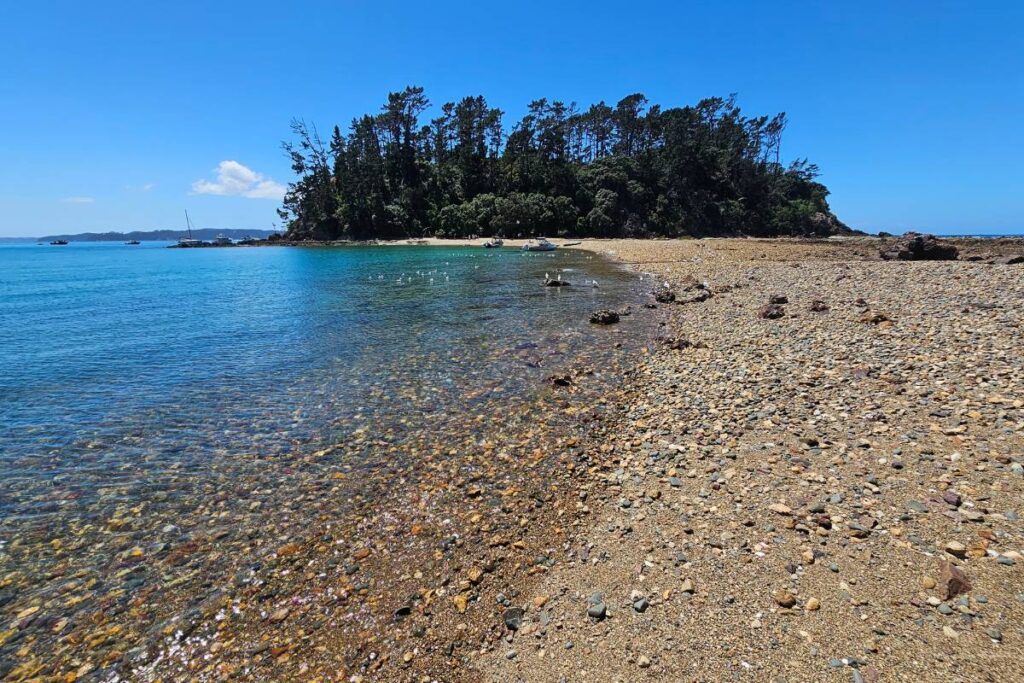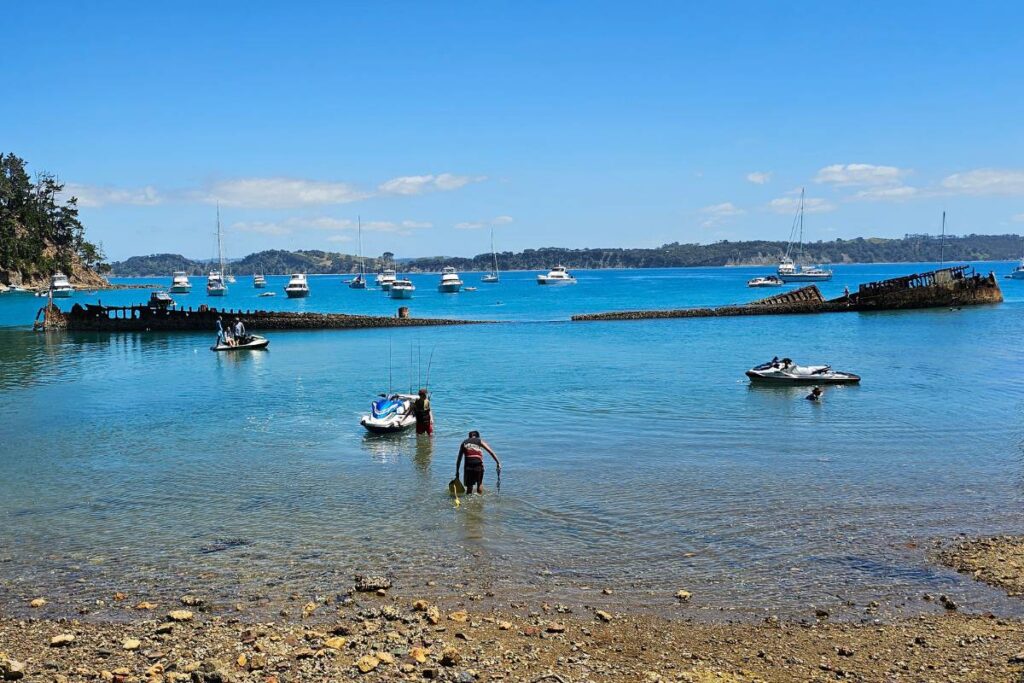Home » North Island » Auckland Region » Hauraki Gulf » Kawau Island » Moturekareka Island Walk
We started the walk from the bay on Moturekareka Island where we anchored our yacht. We took the dingy in and were entertained with the view of a semi-submerged Rewa ship. I’ve explained more about this further down.
There is no road access to this walk. If you go to Kawau Island on the ferry you’ll have to hitch a ride somehow with a boat going from Mansion House. Better to kayak (it’ll take you around 30 mins on a calm day) or take the jetski from Martins Bay on the mainland at Mahurangi East.
This scenic walk crosses a low-tide causeway and connects you to a historic island brimming with charm.
| Location: | Kawau Island, Hauraki Gulf, Auckland Region, North Island |
| Distance: | 1.9 km |
| Time: | 48 mins return |
| Difficulty: | Easy with a few little ups and downs |
| Elevation: | 76m |
| Track Quality: | The track is a bit overgrown, we managed it in flip flops |
| Transport: | You'll need to make your own way there by boat |
| Mountain bikes? | No |
| Wheelchair access? | No |
| Wet Feet: | A little as you cross the causeway, try and do it at low tide. |
| Toilets: | There are no toilets here |
| Dog: | No dogs allowed anywhere on the islands |
| Mobile coverage: | Yes, ok |

Moturekareka Island, near Kawau Island, was once home to a colourful character known as Charlie P. Hansen, a self-proclaimed hermit who captured the imagination of many. You’ll walk through the clearing where his house once stood, with access down to a cute stoney beach. Here’s a glimpse into his intriguing story:
From Sheep Farmer to Island Dweller:
A Life of Solitude and Resourcefulness:
Connection with the Mainland:
Legacy of the Hermit:
Beyond the Hermit:

It’s shrouded in a bit of mystery and intrigue and is great to kayak around. Here’s what we know:
The Ship’s History:
The Sinking:
Uncertainties and Theories:
The Remains Today:
A Piece of Kawau’s History:
FREE Auckland Walks eBook
Subscribe for walking and hiking tips.

Walking Day Pack made in New Zealand